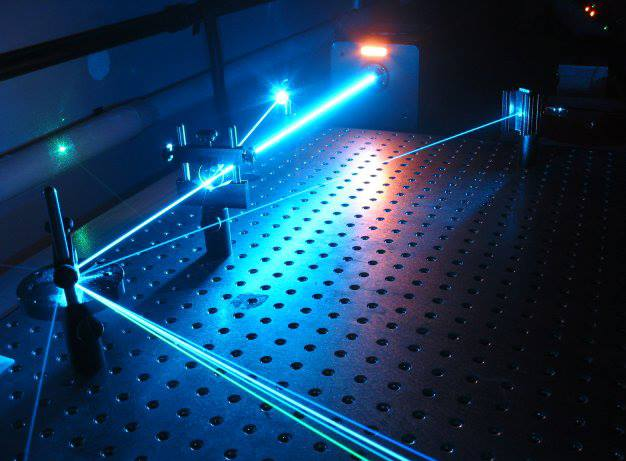Laser laboratory safety information
In recent years, with the continuous development of the laser industry, laser technology has become an inseparable part of the scientific research field, industry and life. For the photoelectric people engaged in the laser industry, laser safety is closely related to laboratories, enterprises and individuals, and avoiding laser harm to users has become a top priority.
A. Safety level of laser
Class1
1. Class1: Laser power < 0.5mW. Safe laser.
2. Class1M: There is no harm in normal use. When using optical observers such as telescopes or small magnifying glasses, there will be hazards exceeding the Class1 limit.
Class2
1, Class2: laser power ≤1mW. Instantaneous exposure of less than 0.25s is safe, but looking at it for too long can be dangerous.
2, Class2M: only for the naked eye less than 0.25s instantaneous irradiation is safe, when the use of telescopes or small magnifying glass and other optical observer, there will be more than the Class2 limit value of harm.
Class3
1, Class3R: laser power 1mW~5mW. If it is only seen for a short time, the human eye will play a certain protective role in the protective reflection of light, but if the light spot enters the human eye when it is focused, it will cause damage to the human eye.
2, Class3B: laser power 5mW~500mW. If it may cause damage to the eyes when looking directly at or reflecting, it is generally safe to observe diffuse reflection, and it is recommended to wear laser protective goggles when using this level of laser.
Class4
Laser power: > 500mW. It is harmful to the eyes and skin, but also can damage the materials near the laser, ignite combustible substances, and need to wear laser goggles when using this level of laser.
B. Harm and protection of laser on eyes
The eyes are the most vulnerable part of the human organ to laser damage. Moreover, the biological effects of laser can accumulate, even if a single exposure does not cause damage, but multiple exposures may cause damage, the victims of repeated laser exposure to the eye often have no obvious complaints, only feel a gradual decline in vision. Laser light covers all wavelengths from extreme ultraviolet to far infrared. Laser protective glasses are a kind of special glasses that can prevent or reduce laser damage to the human eye, and are essential basic tools in various laser experiments.
C. How to choose the right laser goggles?
1, protect the laser band
Determine whether you want to protect only one wavelength or several wavelengths at once. Most laser protective glasses can protect one or more wavelengths at the same time, and different wavelength combinations can choose different laser protective glasses.
2, OD: optical density (laser protection value), T: transmittance of the protection band
Laser protective goggles can be divided into OD1+ to OD7+ levels according to the protection level (the higher the OD value, the higher the security). When selecting, we must pay attention to the OD value indicated on each pair of glasses, and we cannot replace all laser protective products with one protective lens.
3, VLT: visible light transmittance (ambient light)
"Visible light transmittance" is often one of the parameters that is easily ignored when choosing laser protective goggles. While blocking the laser, the laser protective mirror will also block part of the visible light, affecting the observation. Select high visible light transmittance (such as VLT>50%) to facilitate direct observation of laser experimental phenomena or laser processing; Choose a lower visible light transmittance, suitable for visible light is too strong occasions.
Note: The eye of the laser operator can not be directly aimed at the laser beam or its reflected light, even if wearing the laser protective mirror can not look directly at the beam (facing the direction of the laser emission).
D. Other precautions and protection
Laser reflection
1, when using a laser, the experimentalists should remove objects with reflective surfaces (such as watches, rings and badges, etc., are strong reflection sources) to avoid damage caused by reflected light.
2, laser curtain, light baffle, beam collector, etc., can prevent laser diffusion and stray reflection. The laser safety shield can seal the laser beam within a certain range, and control the laser switch through the laser safety shield to prevent laser damage.
E. Laser positioning and observation
1, for the infrared, ultraviolet laser beam invisible to the human eye, do not think that the laser failure and eye observation, observation, positioning and inspection must use the infrared/ultraviolet display card or observation instrument.
2, for the fiber coupled output of the laser, hand-held fiber experiments, not only will affect the experimental results and stability, improper placement or scratching caused by the fiber displacement, laser exit direction at the same time shifted, will also bring great security risks for the experimenters. The use of optical fiber bracket to fix the optical fiber not only improves the stability, but also ensures the safety of the experiment to a great extent.
F. Avoid danger and loss
1. It is prohibited to place flammable and explosive items on the path through which the laser passes.
2, the peak power of the pulsed laser is very high, which may cause damage to the experimental components. After confirming the damage resistance threshold of the components, the experiment can avoid unnecessary losses in advance.






